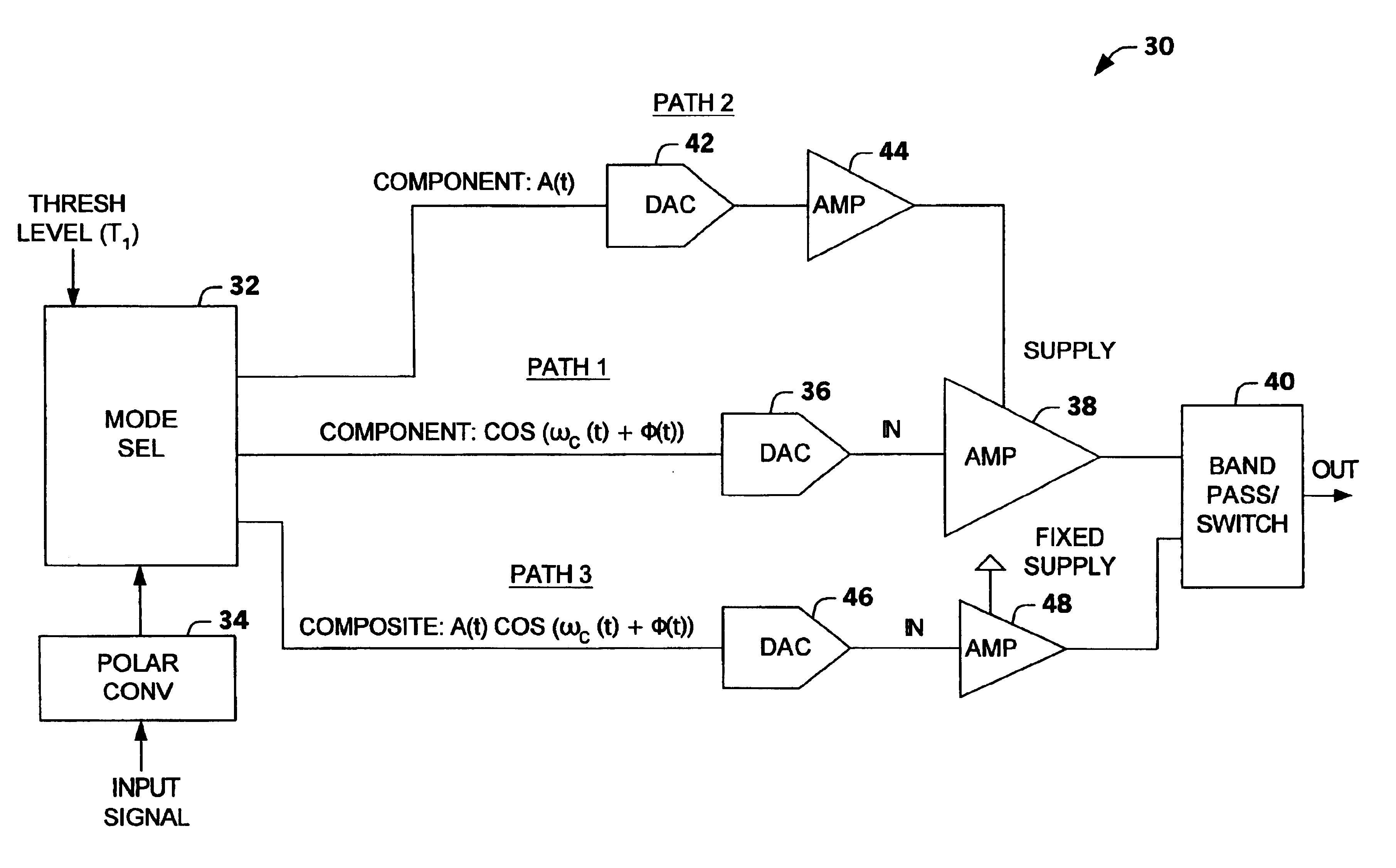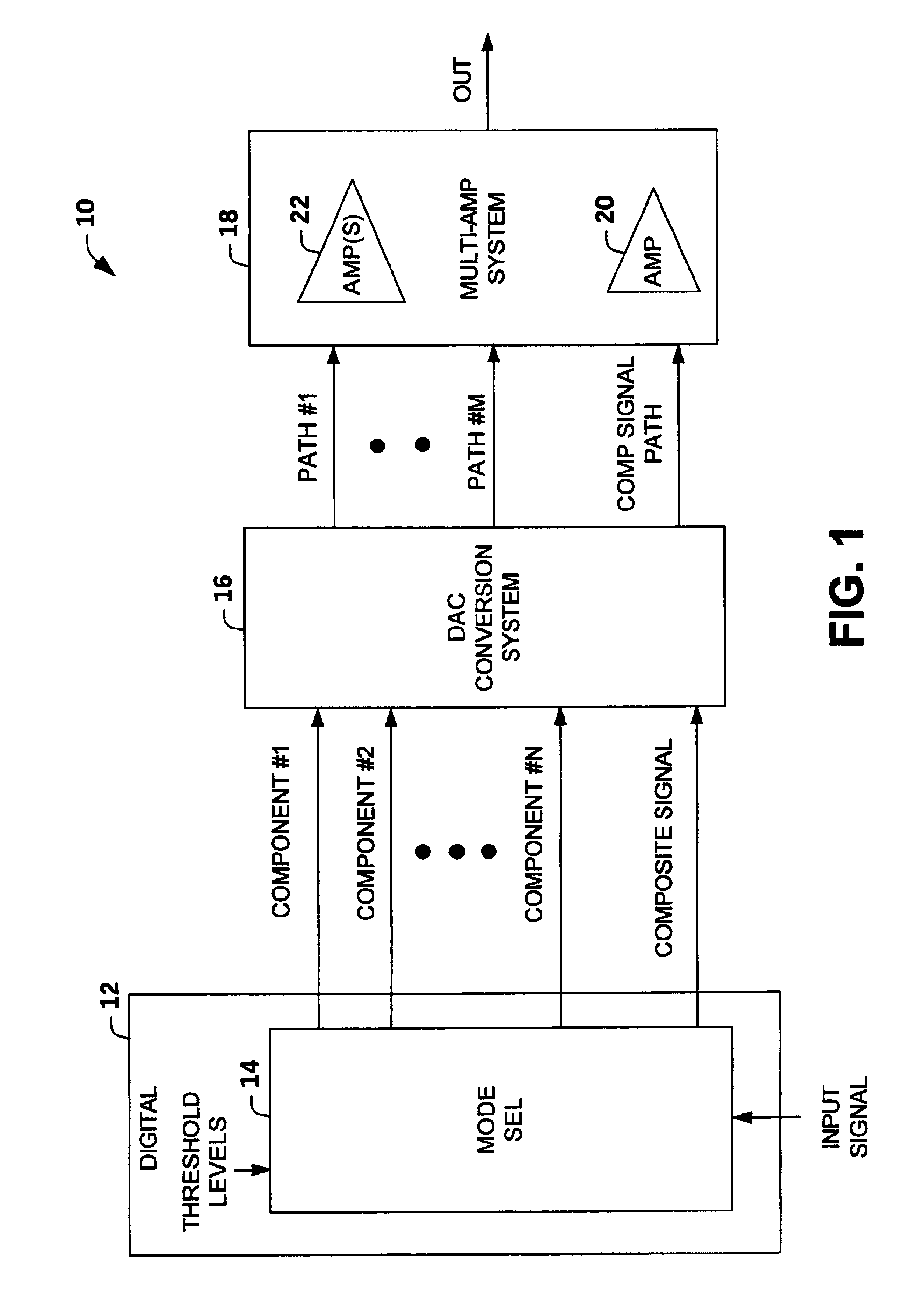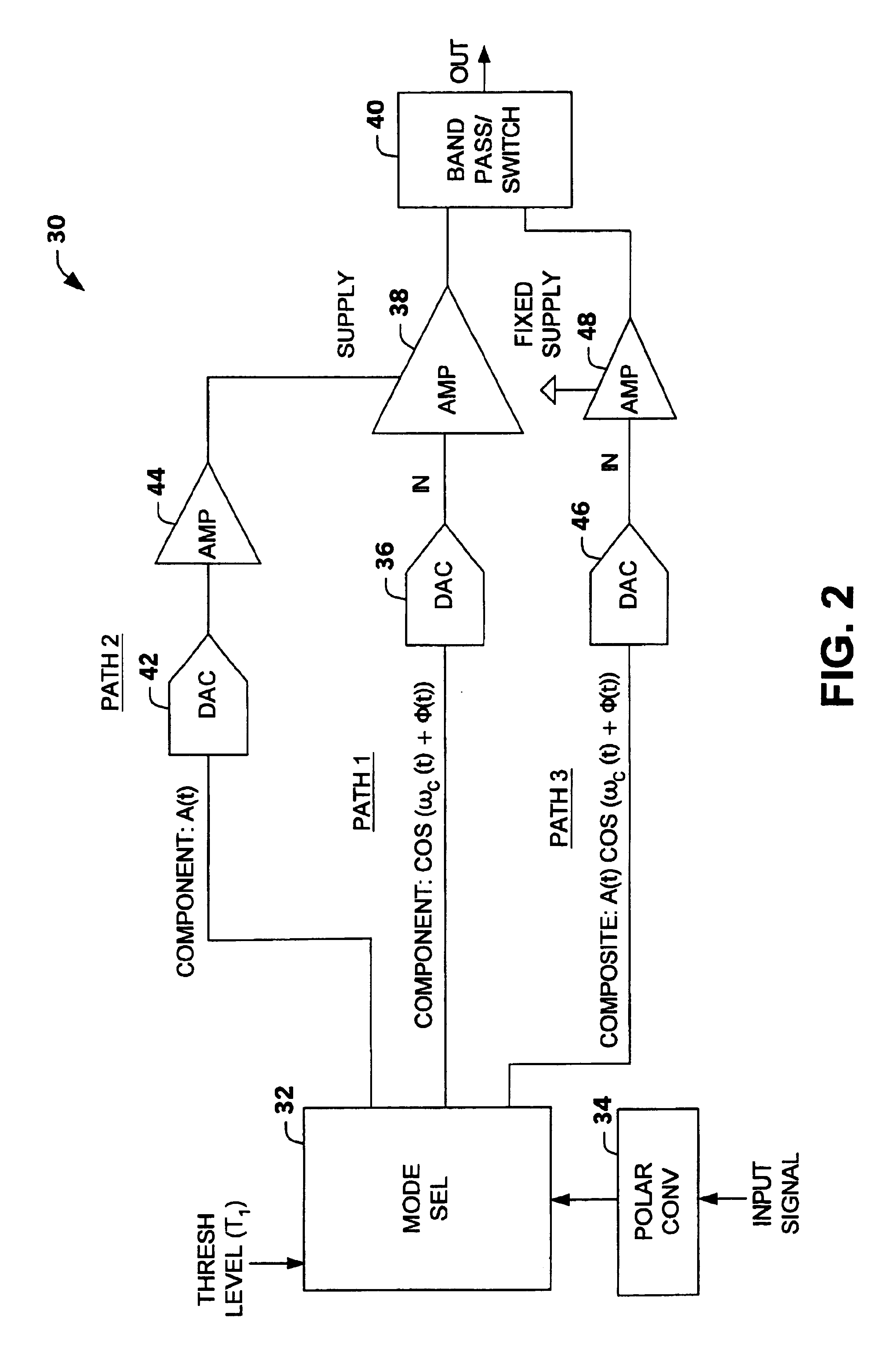Multi-mode multi-amplifier architecture
a multi-mode, amplifier technology, applied in the direction of amplifiers, gated amplifiers, electrical apparatus, etc., can solve the problems of inefficient linear amplifier operation in these types of signals, general non-operation at high efficiency, and additional challenges
- Summary
- Abstract
- Description
- Claims
- Application Information
AI Technical Summary
Benefits of technology
Problems solved by technology
Method used
Image
Examples
Embodiment Construction
The present invention relates to an amplification system or architecture that switches between operation in a component mode and a composite mode based on a characteristic of an input signal relative to a transition point or threshold level (e.g., envelope amplitude level, digital count representation of signal level, power amplifier power level). In the component mode, an input signal is separated into two or more components and transmitted to one or more amplifiers. In the composite mode, a composite signal is amplified via an amplifier (e.g., a linear amplifier). A mode selector controls whether components (“component mode”) of the signal are provided to the one or more amplifiers or whether the composite signal (“composite mode”) is provided to the amplifier.
FIG. 1 illustrates an amplification system or architecture 10 in accordance with an aspect of the present invention. The amplification system 10 switches operation between a component mode and a composite mode based on a cha...
PUM
 Login to View More
Login to View More Abstract
Description
Claims
Application Information
 Login to View More
Login to View More - R&D
- Intellectual Property
- Life Sciences
- Materials
- Tech Scout
- Unparalleled Data Quality
- Higher Quality Content
- 60% Fewer Hallucinations
Browse by: Latest US Patents, China's latest patents, Technical Efficacy Thesaurus, Application Domain, Technology Topic, Popular Technical Reports.
© 2025 PatSnap. All rights reserved.Legal|Privacy policy|Modern Slavery Act Transparency Statement|Sitemap|About US| Contact US: help@patsnap.com



